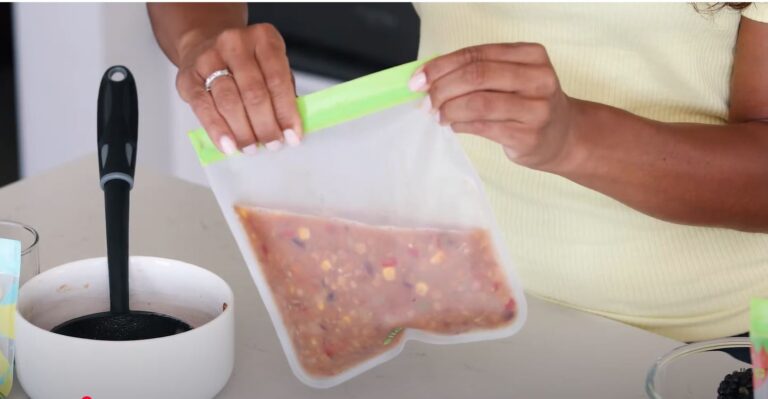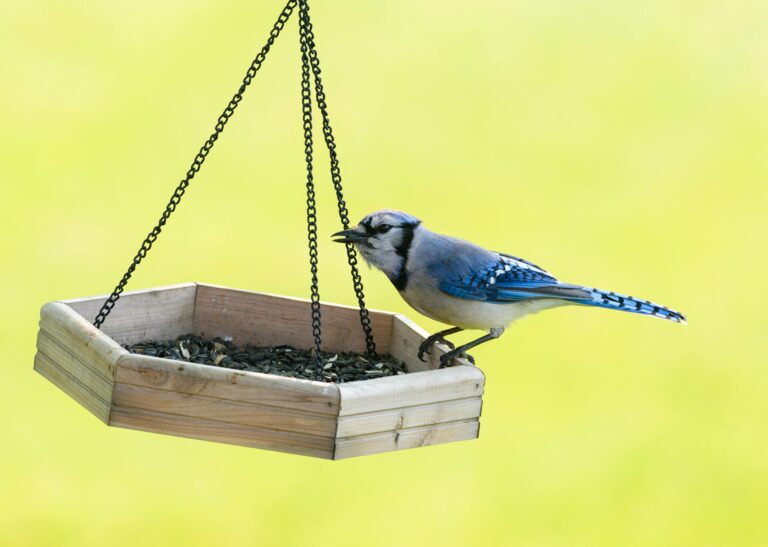How to Clean Wood Cabinets and Make Them Shine: Step-by-Step Guide
Wood cabinets are a central feature of any kitchen, but grease, grime, dust, and everyday spills can quickly dull their finish.
Keeping them clean not only enhances your kitchen’s appearance but also protects the wood from damage over time.
In this guide, you’ll learn safe, effective methods to clean wood cabinets, remove stubborn stains, and restore their natural shine using everyday household products like microfiber cloths, mild dish soap, vinegar, and Murphy’s Oil Soap.
Whether your cabinets are painted, laminated, or natural wood, these step-by-step tips will help you maintain gleaming, long-lasting wood surfaces without causing scratches or warping.
Your kitchen cabinets are the unsung heroes of your home. They hold everything from your coffee mugs to your spices, but over time, they also collect something less welcome: a stubborn layer of grease, grime, and dust.
This isn’t just unsightly; if left unchecked, this buildup can attract pests, lead to discoloration, and even damage the wood’s finish.
Keeping your wood cabinets clean isn’t just about making your kitchen look better it’s about preserving the investment you’ve made in your home.
But before you grab a bucket and a sponge, it’s crucial to know the right way to clean them without causing harm. The wrong cleaner or a little too much water can easily lead to warping, streaking, or stripped finishes.
This guide will walk you through everything you need to know, from the right materials to the exact steps for a deep, satisfying clean that will leave your cabinets looking refreshed and revived.
Section 1: Materials & Tools Needed
Before you start, it’s a good idea to gather all of your supplies. Having everything on hand will make the process much smoother and more efficient. The right tools and cleaners are key to getting a great result without damaging your cabinets.
- Microfiber Cloths: These are your best friends for this job. You’ll want several. Microfiber is gentle on wood finishes, highly absorbent, and excellent at trapping dust and grime. You’ll need at least one for cleaning, one for rinsing, and a few more for drying.
- Soft-Bristle Brushes: Don’t forget the details! A small, soft-bristle brush (like a new toothbrush or a cleaning brush) is perfect for getting into the nooks, crannies, and grooves of your cabinet doors. These areas often collect a lot of dust and crumbs.
- Spray Bottles: A spray bottle is essential for mixing and applying your cleaning solution. It allows you to control the amount of liquid you’re using and prevents you from oversaturating the wood.
- Mild Dish Soap (pH-neutral): A few drops of a gentle, pH-neutral dish soap mixed with warm water is the go-to solution for everyday grime and light grease. It’s effective yet safe for most cabinet finishes.
- White Vinegar: When you need a little more power to cut through stubborn grease, a solution of equal parts white vinegar and warm water can be very effective. The acidity of the vinegar helps dissolve tough residue.
- Murphy’s Oil Soap: For natural wood cabinets, many professionals swear by Murphy’s Oil Soap. It’s designed to be gentle on wood, effectively cleaning and leaving a subtle shine. However, be careful not to use too much, as a little goes a long way and too much can leave a sticky residue.
- Multi-Purpose Cleaner: For very stubborn spots or stains that a mild solution can’t handle, a non-abrasive, wood-safe multi-purpose cleaner can be a good option. Always check the label to ensure it’s safe for wood finishes.
- Melamine Sponge / Magic Eraser (optional): For those stubborn scuff marks or stains that won’t budge, a melamine sponge can work wonders. However, use it with extreme caution. Melamine sponges are essentially a very fine sandpaper, and scrubbing too hard or too long can permanently damage or remove the finish from your cabinet. Use gentle, light pressure only on the affected area.
- Natural Wood Wax or Furniture Polish: After a deep clean, applying a wood wax or polish can help restore the shine and add a protective layer to the cabinet surface. This extra step helps prevent future stains and makes it easier to wipe away grime. Look for a natural, non-toxic product like a beeswax or olive oil-based polish.
- Rubber Gloves (optional): While the cleaning solutions are mild, wearing rubber gloves is always a good idea to protect your hands, especially during a longer cleaning session.

Section 2: Preparing for Cleaning
Don’t just jump right into wiping. A little preparation goes a long way toward making your cleaning process more effective and efficient. This is the stage where you set yourself up for success and prevent the common mistakes that can make the job harder.
Remove Items from Cabinets
Before you start a deep clean, empty out the cabinets one at a time. This serves two purposes. First, it allows you to get to every surface, including the inside shelves and the frames of the cabinet doors. Second, it gives you a great opportunity to declutter and reorganize. As you’re taking things out, you may find items you no longer need or want, giving you a chance to make your kitchen even more organized.
Dusting and Vacuuming: Top to Bottom
This is a crucial first step that many people skip. Before you introduce any moisture, you need to remove the top layer of loose dust, crumbs, and debris. If you apply a wet cloth to a dusty surface, you’ll just create a sticky, muddy mess that’s harder to clean.
Start by dusting the very top of your cabinets and work your way down. Gravity is your friend here, so you want to ensure any dust you knock down lands on a surface you haven’t cleaned yet. For a very dusty kitchen, using a vacuum with a soft-bristle brush attachment is the best way to get all the debris without scratching the finish. Pay special attention to the ledges, grooves, and intricate designs on your cabinet doors, as these areas are magnets for dust.
Checking Cabinet Finish Before Cleaning (Patch Test)
This is perhaps the most important safety step in the entire process. Before you apply any cleaning solution to your cabinets, you must perform a patch test. Every cabinet finish is different, and you can’t assume a product that worked on one type of wood will work on another.
To perform a patch test, simply apply a small amount of your cleaning solution to a hidden or inconspicuous area of the cabinet a spot behind a door hinge, inside a drawer, or in a corner of the cabinet’s side. Let the solution sit for a minute, then wipe it clean and dry. Check the area for any signs of discoloration, dullness, or damage. If the finish looks good, you’re safe to proceed with cleaning the rest of your cabinets.

Protecting Cabinet Hardware or Removing Handles for Deep Cleaning
Cabinet hardware things like knobs and pulls are some of the most frequently touched surfaces in your kitchen, which means they are often the greasiest. For a thorough deep clean, you have a couple of options. You can either be very careful and clean around the hardware, or, for an even better result, you can remove the handles completely.
Removing the hardware allows you to get to every nook and cranny, and it also gives you a chance to give the handles a deep clean as well. Just be sure to keep the screws and hardware in a safe place so you can reattach them once the cleaning is complete. If you’re not comfortable removing the hardware, just use a small, soft brush to get into the crevices around the base of the handles.
Section 3: Cleaning Wood Cabinets
With all the preparation out of the way, it’s time for the main event: the actual cleaning. This is where you’ll see all that hard work pay off as the true beauty of your cabinets is revealed from beneath layers of dust and grime. The key here is to be methodical and gentle, making sure you use the right approach for your specific cabinet type.
Choosing the Right Cleaner for Your Cabinet Type
This is where a little knowledge goes a long way. Not all wood cabinets are created equal, and the type of finish they have dictates the best cleaner to use. The two most common types you’ll encounter are painted or laminate cabinets and natural wood cabinets.
- Painted/Laminate Cabinets: These cabinets have a tough, protective finish on the surface. They are the easiest to clean and can handle a simple, DIY cleaning solution. Their durable surface makes them highly resistant to moisture and most mild cleaning agents. For these, a gentle soap and water solution is often all you need to get the job done.
- Natural Wood Cabinets: Cabinets with a natural wood finish (like a stain, varnish, or oil finish) can be a bit more delicate. While they have a protective coating, it’s generally best to use a cleaner specifically formulated for wood. These cleaners, like Murphy’s Oil Soap, are designed to clean without stripping the finish and often leave a nice sheen behind. They’re an excellent choice for revitalizing older, more traditional wood cabinets.
Mixing DIY Cleaning Solutions
My personal go-to for most cabinet cleaning is a simple, effective DIY solution. It’s what I’ve used in my own home and what I recommend to friends because it’s both gentle and powerful enough for most jobs.
- Vinegar + Water + Dish Soap: This is my trusty all-purpose mix for those with painted or laminate cabinets. In a spray bottle, combine equal parts white vinegar and warm water. Then, add just a few drops of mild dish soap. The warm water helps to dissolve the grime, the vinegar cuts through any lingering grease, and the soap helps to lift and emulsify the dirt. The key here is to not go overboard with the soap—a little really does go a long way. Too much soap will leave a residue that’s difficult to rinse off and can make your cabinets feel tacky.
- Murphy’s Oil Soap Dilution: If you’re using a product like Murphy’s Oil Soap for natural wood, always follow the instructions on the bottle for the correct dilution. Typically, it’s just a capful of the soap mixed with a gallon of warm water. When using this, remember my pro-tip: a little bit of product is all you need. You’re trying to clean the wood, not make it sticky.
Using the “Three-Towel System”
This is my secret weapon for a streak-free, professional-looking finish. The “three-towel system” is a simple but powerful technique that ensures you’re cleaning, rinsing, and drying all in one go, preventing water spots and protecting the wood.
- Cleaning Towel: This is your first microfiber cloth. You’ll dip this towel into your cleaning solution, wring it out completely so it’s just damp, not wet, and use it to wipe down the cabinets.
- Rinse Towel: This is your second, clean microfiber cloth. You’ll dampen this one with plain, clean water and use it to wipe away any soap or vinegar residue left behind by the first towel. This is a crucial step that ensures your cabinets won’t be left with a sticky film.
- Dry/Buff Towel: This is your final towel, and it must be completely clean and dry. As soon as you finish rinsing an area, you’ll immediately follow up with this towel to thoroughly dry the surface. This is critical for wood cabinets, as it prevents water from seeping into the grain and causing warping or damage. It also acts as a buffing towel, leaving a beautiful, streak-free shine.
Wiping Down Cabinet Surfaces
With your cleaning system ready to go, it’s time to tackle the cabinets. Just like dusting, it’s best to start at the top and work your way down. This prevents any drips or dirt from falling onto an area you’ve already cleaned.
Begin by gently wiping down the outside doors and frames. Work in small sections, applying light pressure with your cleaning towel. Once an area is clean, immediately follow it with your rinse towel and then your dry towel. This is a continuous process that works best when you go section by section. Don’t let the water sit on the wood. Once the outsides are done, repeat the process for the insides of the cabinets and the drawer fronts.
Cleaning Cabinet Grooves, Ledges, and Nooks
These are the areas where dirt and grime love to hide. A damp microfiber cloth is great for flat surfaces, but for those tricky spots, a soft-bristle brush is your best friend. Use a small brush to gently scrub at any buildup in the corners of your cabinet frames or in the decorative grooves of the doors. Then, you can wipe it all away with your towels. This attention to detail is what separates a good clean from a truly deep, satisfying one.
Section 4: Handling Grease & Stains
Sometimes a simple wipe-down isn’t enough. Stubborn grease, food stains, and scuff marks require a little extra muscle. But don’t worry, there are safe and effective ways to tackle these common problems.
Stove-Adjacent Cabinet Cleaning Tips
The cabinets closest to your stove are the ones that take the most abuse. The grease from cooking becomes airborne, creating a stubborn, sticky film on these surfaces that acts like a magnet for dust and dirt. For these high-traffic, high-grease areas, you might need to adjust your approach.
If your standard cleaning solution isn’t cutting it, you can try a slightly stronger solution or make a second pass. For really tough spots, you can make a paste of baking soda and water, apply it directly to the greasy area, let it sit for a few minutes to break down the grease, and then gently wipe it away. Just remember to use a soft cloth and a gentle touch.
Removing Stubborn Stains and Marks
Beyond the daily grime, cabinets can pick up a variety of stubborn marks, from scuff marks to dried-on food splatters. For these, a gentle multi-purpose cleaner can be a good option. Spray the cleaner onto your cleaning towel, not directly onto the cabinet, and gently scrub the spot. Rinse and dry immediately.
Using Melamine Sponges Safely
I’ll be honest, the melamine sponge, often sold as a “Magic Eraser,” feels like magic. It can get rid of scuff marks and stains that nothing else can. However, a crucial piece of information that many people miss is that a melamine sponge is essentially an extremely fine sandpaper.
Therefore, you must use it with a great deal of caution and only as a last resort. Apply a small amount of water to the sponge and use a very light, gentle touch to scrub the stain. You will literally be sanding off a tiny layer of the cabinet’s finish. Use it only on the specific spot that is stained, and be sure not to scrub too hard, or you risk permanently dulling or removing the finish.
Cleaning High-Touch Areas: Knobs, Pulls, and Edges
These are the most used parts of your cabinets, so they deserve a little extra love. The handles, knobs, and edges of your cabinet doors are where hand oils, grease, and grime accumulate the most. Take some time to clean these areas thoroughly. You can use your same cleaning solution and a soft brush to get into all the nooks and crannies around the hardware. If you haven’t removed the handles, just be sure to give them a good wipe-down as well. These small details will make a huge difference in the overall look and feel of your cabinets.
Section 5: Drying & Polishing
Congratulations! You’ve done the hard work of cleaning away all the dust, dirt, and grime. Now, it’s time for the final two crucial steps that will not only leave your cabinets looking fantastic but also protect them for the long haul. This is the stage where a good clean becomes a truly professional one.
Importance of Thorough Drying to Prevent Warping
I cannot stress this enough: thorough drying is the most crucial step in cleaning wood cabinets. If you leave moisture behind, you are inviting a whole host of problems. Wood is naturally porous, and if it’s left wet for too long, it will begin to swell, which can lead to warping, bubbling of the finish, and even permanent damage. Even if the damage isn’t immediately visible, a simple water spot can dry and leave a permanent mark.
The key to preventing this is to dry immediately. As soon as you wipe an area with your rinse cloth, you must follow up with a clean, dry microfiber cloth and wipe the surface completely dry. Don’t wait even a minute. This is why the “three-towel system” is so effective; it forces you to clean, rinse, and dry in a continuous, protective process. Your final towel should be dry to the touch at all times. If it starts to feel damp, grab a new one immediately. This diligence is what prevents water damage and leaves your cabinets with a beautiful, streak-free finish.
Applying Natural Wood Wax or Polish
Once your cabinets are sparkling clean and bone dry, it’s the perfect time to give them a little extra love with a protective polish. This isn’t just about making them shine; it’s about creating a protective barrier that will help prevent future grime and make routine cleaning easier. A good polish or wax can help fill in tiny scratches, restore the wood’s natural luster, and repel water and dirt.
Before you apply any product, make sure the cabinets are completely free of any soap residue or streaks. Then, follow the directions on your chosen polish. My personal preference is to apply the wax or polish onto a clean, soft cloth first, rather than spraying it directly onto the cabinets. This gives you more control over the application and ensures you don’t get any drips or runs on the surface.
Buffing to Restore Shine
Once the polish has been applied, it’s time to buff it in. This is the final step that will truly make your cabinets shine. Using a separate, clean, and dry microfiber cloth, gently buff the surface of the wood in a circular motion. This will work the polish into the finish, removing any excess product, and bringing out a beautiful, rich glow. You’ll be amazed at how this simple step can completely revitalize the appearance of your cabinets, making them look brand new again.
Alternative Natural Polishes: Olive Oil, Beeswa
If you prefer to avoid commercial polishes, you can create your own natural alternative that is both safe and effective. A simple mixture of olive oil and white vinegar can work wonders. Mix a small amount of olive oil (about one cup) with a quarter-cup of white vinegar. Apply it to a cloth and use it to wipe down the cabinets, buffing it in as you go. The oil will moisturize the wood and the vinegar will help cut through any lingering grime.
Another great natural option is a beeswax-based wood conditioner. These products are fantastic for nourishing the wood and creating a durable, protective barrier. They are a bit more labor-intensive to apply but provide excellent, long-lasting results that really bring out the depth and character of the wood grain.
Section 6: Interior Cabinet Cleaning
Now that the outside of your cabinets is gleaming, it’s time to tackle the inside. While the interior might not get greasy, it does collect crumbs, dust, and spills from stored food items. Cleaning the inside of your cabinets is not only hygienic, but it’s also the perfect opportunity to get your kitchen organized once and for all.
Cleaning Inside Cabinets and Drawers
I’ve been there—you look at all your cabinets, and the thought of emptying them all at once is just overwhelming. So, here’s my pro-tip: clean one cabinet at a time. Seriously. Don’t try to empty your entire kitchen all at once. It just creates a huge mess and can leave you feeling defeated before you even start.
The best approach is to tackle one cabinet or drawer at a time, using the same system we’ve already discussed. First, take everything out. Then, give the inside a good vacuuming with a crevice tool to get rid of all the crumbs and dust. Finally, use your cleaning solution and the “three-towel system” to wipe down the shelves and interior walls.
Decluttering While Cleaning
This is the perfect time to declutter. As you’re taking everything out of a cabinet, take a moment to look at each item before you put it back. Do you still use that oddly shaped bowl? Is that a spice jar from three years ago? I promise you’ll be surprised at what you find. I usually end up with a small box of items to donate or throw away after every big cabinet clean. This decluttering step not only makes your kitchen more functional but also makes it easier to keep clean in the future.
Focus on Frequently Used Items (Spice Drawers, Dish Cabinets)
If a full-scale interior clean feels like too much, it’s okay to start small. Prioritize the areas that get the most use, as these are the ones that are likely the dirtiest. Your spice drawer or cabinet, the dish cabinets, and the utensil drawers are all high-traffic areas that are well worth the effort to clean first. These are the spots where spills and crumbs are most likely to accumulate. By tackling these first, you’ll get the most bang for your buck in terms of cleanliness.
Section 7: Maintenance & Frequency
A big deep clean is satisfying, but it’s the small, consistent maintenance that keeps your cabinets looking great day in and day out. Think of it like a workout routine—a big session is good, but consistent daily effort is what produces the best results.
Recommended Cleaning Frequency: Weekly, Monthly, and Deep Clean
- Weekly: Give the cabinet doors and drawers near your stove, sink, and garbage can a quick wipe-down with a damp cloth. These are your high-traffic zones and the areas most susceptible to grease and food splatters. A quick, weekly wipe prevents grime from building up and becoming a major chore later.
- Monthly: Do a more thorough wipe-down of all your cabinet fronts and hardware. You don’t need to do the full “three-towel system” every time, but a good wipe with a damp, soapy cloth followed by a dry one will keep things looking fresh.
- Deep Clean: Plan a full-scale deep clean, including the interiors and a protective polish, about once or twice a year. This is the perfect time for a big decluttering session and a complete refresh of your kitchen.
Preventing Grease Build-Up and Stains
The best way to deal with grime is to prevent it from happening in the first place. You can do a few simple things to keep your cabinets cleaner for longer:
- Use your exhaust fan! When you’re cooking with oils or high heat, turn on your stove’s exhaust fan. This will help pull the airborne grease and steam away from your cabinets.
- Wipe spills immediately. If you get a splatter of food or a splash of water on your cabinets, wipe it up right away. Don’t let it sit and harden into a stain.
- Use the “damp, not wet” rule. When cleaning spills, make sure you’re using a damp cloth and not a soaking-wet one.
Protecting Cabinets from Water Damage and Discoloration
Finally, remember the core principles of wood cabinet care: be gentle and be mindful of moisture.
- Always dry. Never let water sit on the surface of your cabinets.
- Choose the right cleaner. Avoid harsh chemicals like bleach or ammonia that can strip the finish.
- Consider a protective polish. A regular application of a natural wax or polish can add a layer of protection that repels moisture and grime, making your job much easier in the long run.







